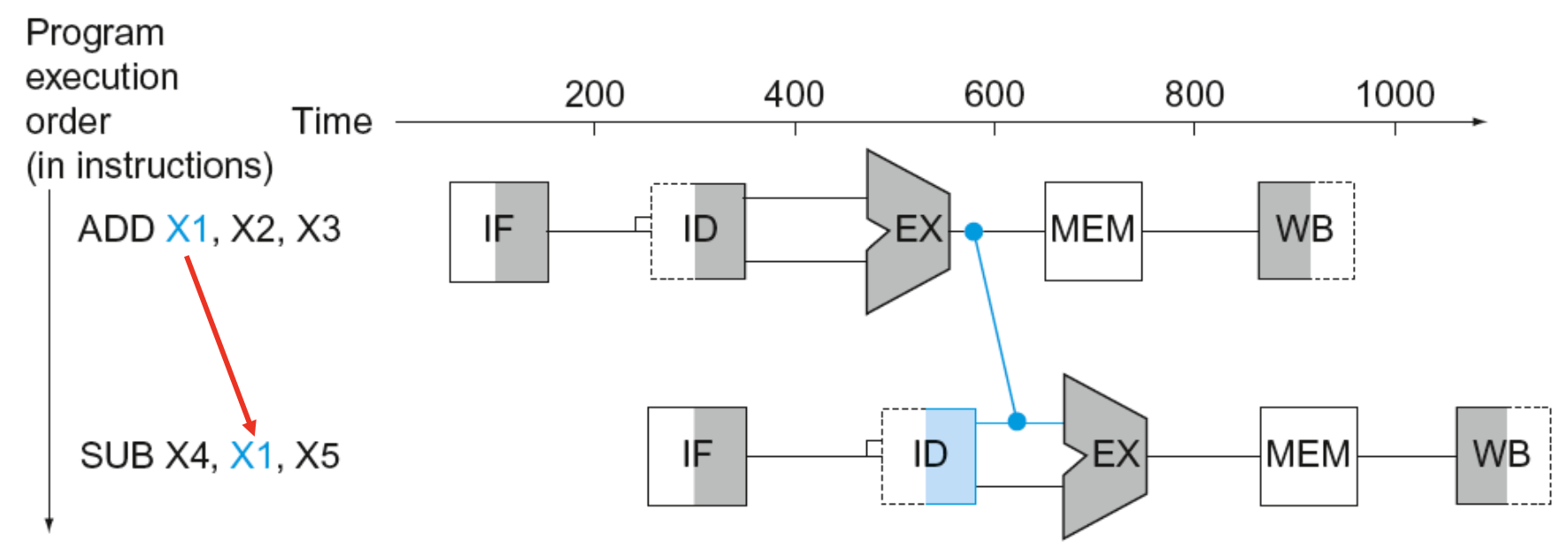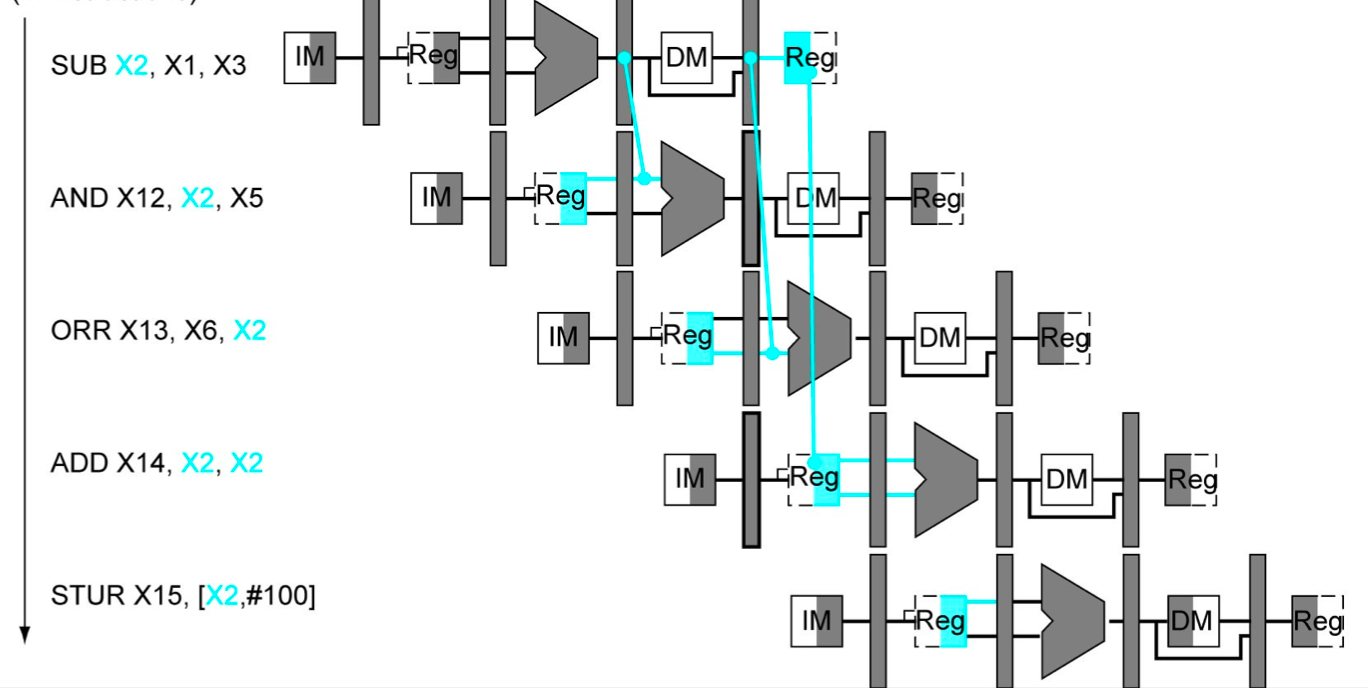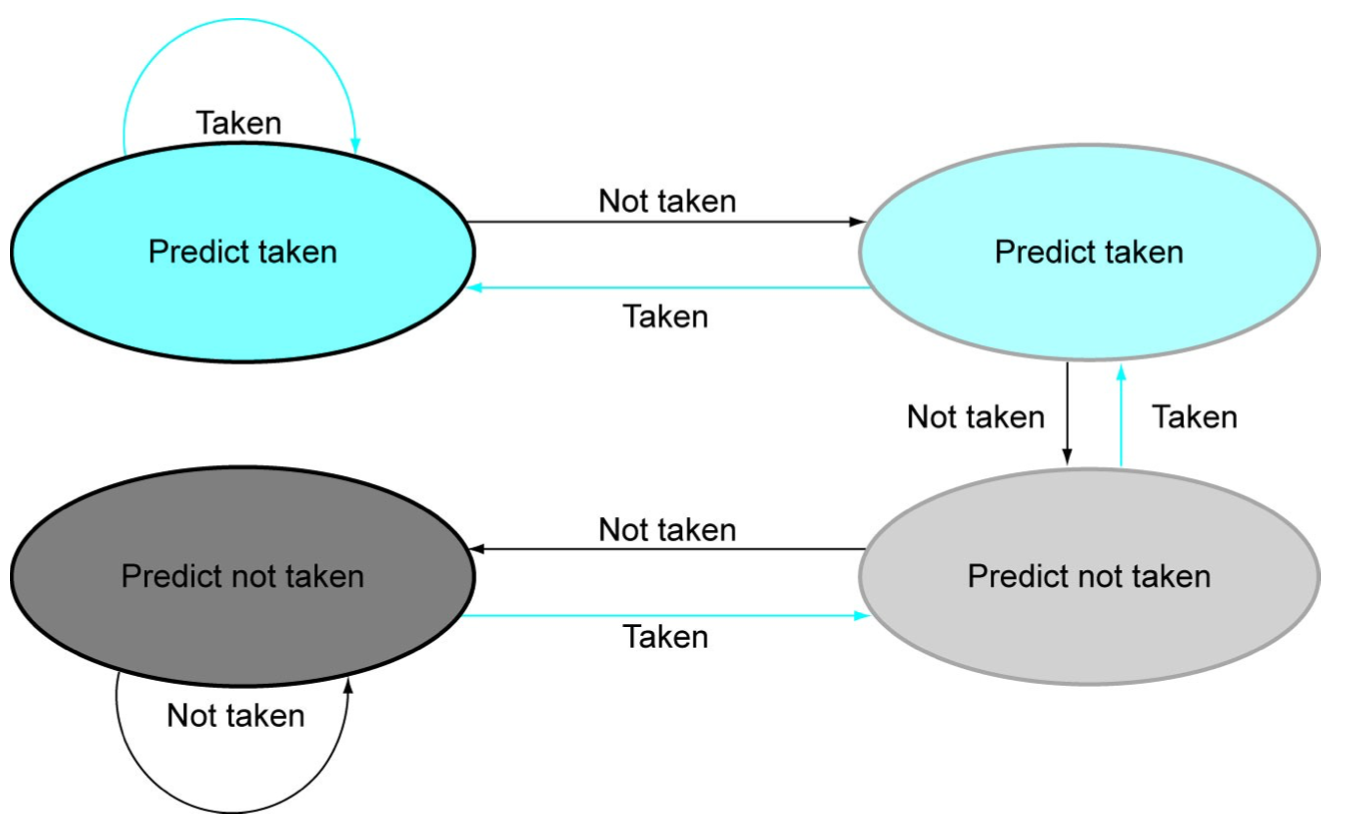Hazards
Situations that prevent starting the next instruction in the next cycle
Types
- Structural Hazard
- A required resource is busy
- Stalls for the cycle that the resource is busy
- Ex: Trying to read instruction at the same time that memory is being written in a processor with a single memory interface
- Data Hazard
- Need to wait for previous instruction to complete its data read/write
- When two instructions depend on each other
- Types:
- Read after write: a = b + c, d = a + e
- Write after write: a = b + c, a = d + e
- Write after read: b = a + c, a = d + e
- Only a problem if the second instruction is going through a shorter pipeline
- Can still be somewhat optimized using forwarding
- Not perfect because you can’t send data back in time
- Those remaining stalls are called Load-Use hazard
- Control Hazard
- Deciding on control action depends on previous instruction
- You don’t know what next instruction to fetch if there is a conditional branch
Avoiding
- Forwarding
- Reduces the impact of data hazards
- Use result as soon as it is computed
- Don’t wait for it to be stored in a register
- Requires extra connections in the datapath


- Call Scheduling
- Avoid data hazards by rearranging instructions
- Modern compilers will automatically do this
- Branch Prediction
- Avoids control hazards
- Just start doing one of the branches before you know if you are going to branch or not
- If the prediction was wrong, the pipeline is flushed to undo the guess
- By the time that it realizes it was wrong, it should be able to be undone
- The easiest prediction is just to move to the next instruction and not branch
- More realistic branch prediction
- Static branch prediction
- Based on typical branch behavior
- Ex: Loops normally loop
- Dynamic branch prediction
- Hardware measures actual branch behavior
- Assume that the trend will continue
- Uses a history table of branches taken
- More often used (when the additional transistors are feasible)
- Static branch prediction
Dynamic Branch Prediction
- Hardware measures actual branch behavior
- Assume that the trend will continue
- Uses a history table of branches taken
- More often used (when the additional transistors are feasible)
- Types of Tables
- 1-bit
- Branch table only keeps track of the last path taken
- A loop with predict wrong the first and last repeat
- This becomes a problem when the loop is inside of another loop and it adds up
- 2-bit
- Only change prediction on two successive mispredictions

- Fixes the nested loop scenario
- 1-bit
Stalls
- When you can’t avoid a hazard, a stall passes through the pipeline
- Also called bubbles because they flow through the pipeline
- How
- Force control values in ID/EX register to 0
- Insert a
NOP(no operation) either through hardware during runtime or by compiler beforehand
- Insert a
- Prevent update of PC and IF/ID register
- Using instruction is decoded again
- Following instruction is fetched again
- 1-cycle stall allows MEM to read data for LDUI
- Force control values in ID/EX register to 0